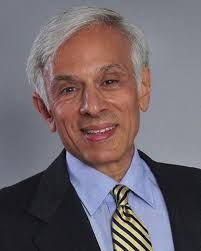In previous articles, I have explained how to estimate the amount you’ll spend each year once you stop working, and the size of the nest egg required to support that spending. The next step is to calculate how much you’ll need to save each year to reach that goal.
There are many interactive tools available to help you arrive at this savings number, including one accessible through the U.S. Securities and Exchange Commission website. Find the one you are most comfortable using.
Reaching your retirement goal, however, depends not only on how much you save, but also how you save it. The challenge is determining which combination of options will yield the greatest benefit. Here are a few suggestions.
Start now. Leverage the power of compounding, which occurs when investment earnings generate their own earnings. To work it requires saving, re-investing the earnings and time. The more you save and the more time your money has to grow, the better.
Make use of tax-advantaged accounts. Employer retirement plans (e.g., 401k, 403b) and IRAs are powerful wealth-building tools because of the special tax treatment they receive. Contributions and earnings grow tax-deferred or even tax-free for years, increasing your chances of building a substantial retirement nest egg. These accounts come in two versions, traditional and Roth. Typically, contributions to traditional accounts can reduce taxable income and, therefore, your tax bill. Furthermore, investment earnings are tax-deferred until withdrawn. Roth contributions, on the other hand, are not tax-deductible, but earnings and withdrawals during retirement are tax-free, provided you meet some basic requirements.
Prioritize how you use your savings. If your employer plan offers a matching contribution, save at least the amount your employer will match. This is “free” money, and it will grow tax-deferred. You will not get a better deal anywhere. If you do not get an employer match or have already taken full advantage of one and still have additional savings, pay down any high-interest debt next. Unpaid interest and finance charges are continuously added to your balance, so the power of compounding works against you, creating a snowball effect. After an employer match, eliminating this debt will provide a great return on your investment.
For any additional savings, think about further funding your tax-advantaged retirement accounts. Whether you add to your employer’s plan or an IRA depends upon what you qualify for and your individual circumstances. If you are eligible to contribute to either, consider funding your IRA first. This gives you the benefits of tax-advantaged growth and a larger menu of inexpensive investment options than most employer plans offer. If you decide to fund your IRA to the limit, and still have more savings, continue funding your 401(k) up to the maximum allowed. After that, direct any retirement savings into a taxable brokerage account.
There are lots of great ways to save for retirement. Now that you have a sensible plan in place, it’s time to put that plan into action!
This article is for general information purposes only and is not intended to provide specific advice on individual financial, tax or legal matters. Please consult the appropriate professional concerning your specific situation before making any decisions.
John Spoto is the founder of Sentry Financial Planning in Andover and Danvers. For more information, call 978-475-2533 or visit www.sentryfinancialplanning.com.

